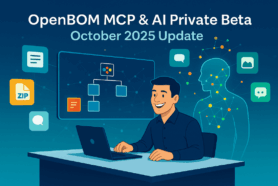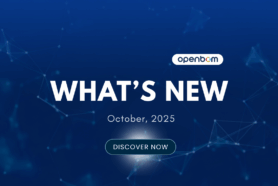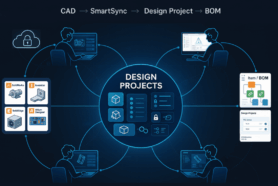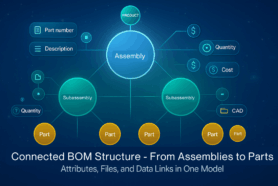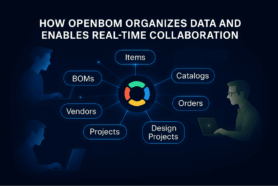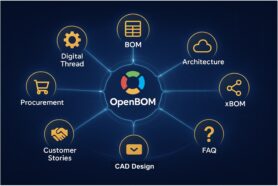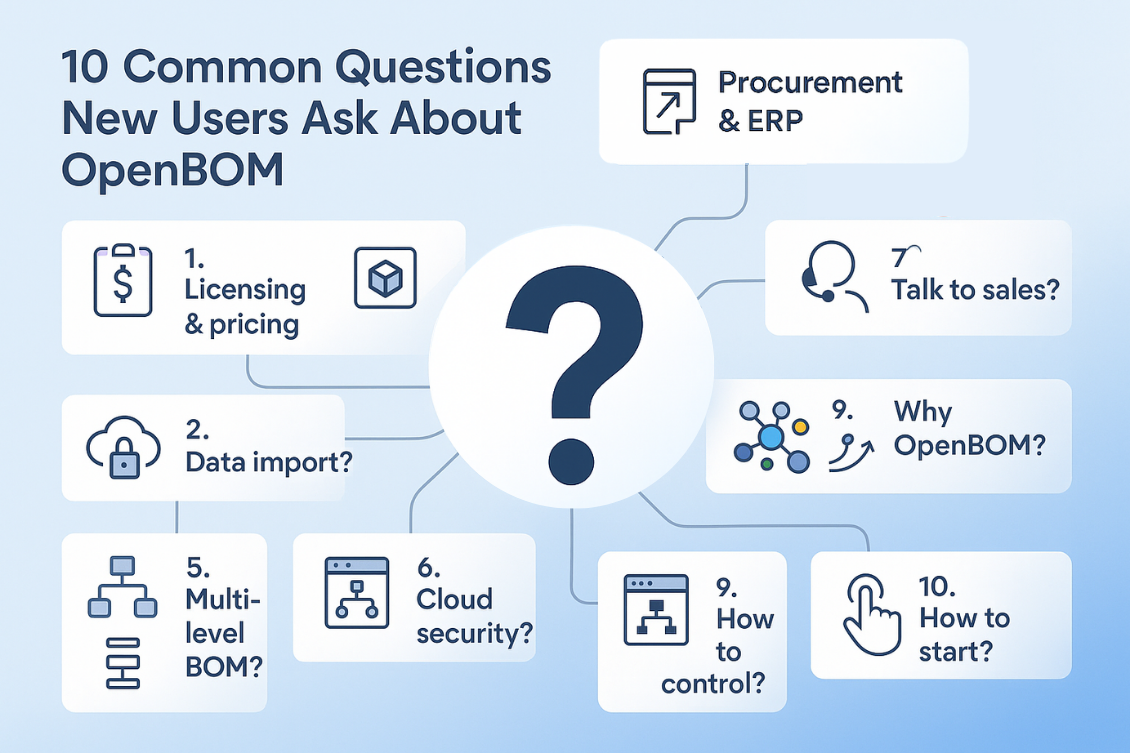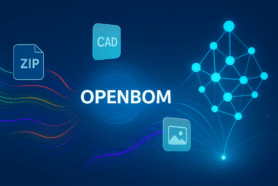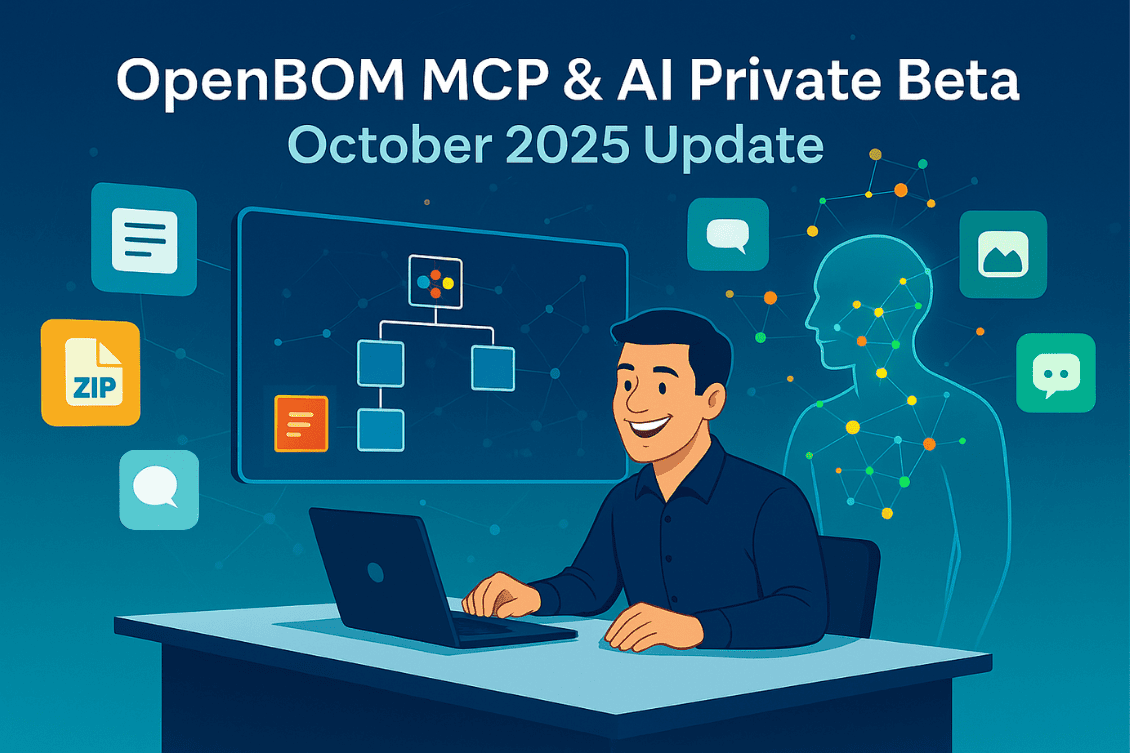
The journey to bring AI into the day-to-day work of engineers and manufacturing teams is not theoretical anymore – it’s unfolding in real time. Over the past several months, we have been working closely in the development and also communicated with a selected group of users in the OpenBOM MCP & AI Private Beta, learning how AI can meaningfully assist with product data, BOM tasks, collaboration, and decision-making..
Before we dive into what’s new, if you missed earlier announcements or want to understand how this journey started, I recommend reviewing these previous articles on the blog. They outline the first phase of the beta, the introduction of AI to BOM work, and why building MCP was essential to support real AI workflows in PLM – OpenBOM New MCP update and OpenBOM MCP private beta.
Moving from Questions to Activities
The first stage of the beta showed us something important: people don’t just want to ask questions to AI, they want AI to help them get things done. Users want guidance, structure, support, and the ability to move forward with their work. Based on this, our focus in the October update was to make the AI more helpful in conversations, more supportive in everyday tasks, and more capable of working with real product data.
One of the most visible improvements is the progress we made in conversational BOM workflows. The AI now does a better job understanding what you’re trying to accomplish and moves the conversation in a constructive direction.
Instead of simply providing an answer and stopping there, it now offers suggestions, proposes next steps, and helps you advance through a process. Conversations feel less like isolated Q&A and more like working with an assistant who stays with you throughout the task.
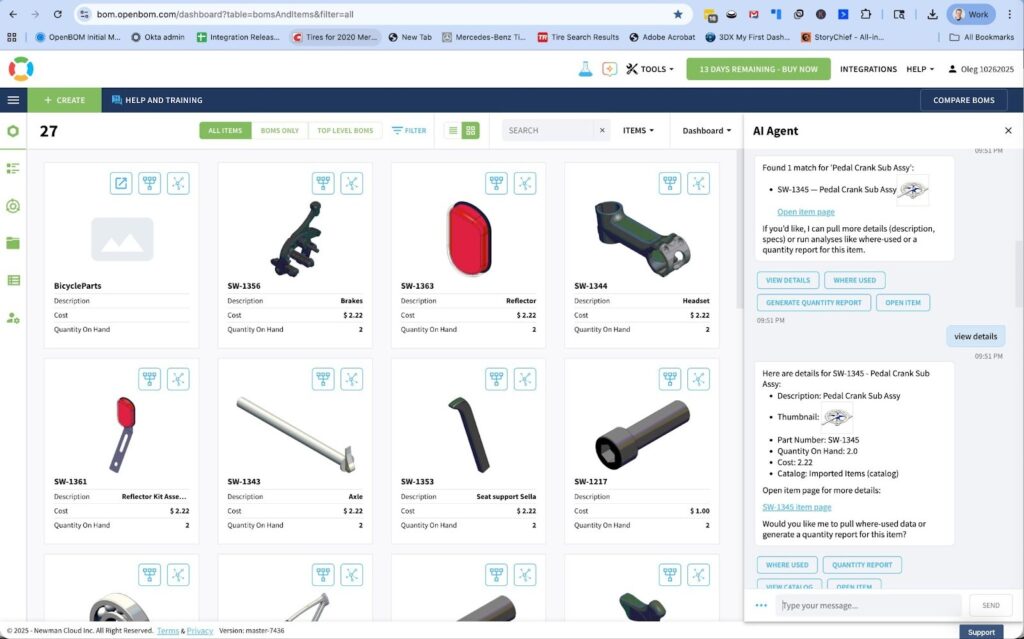
The AI remembers the context of the discussion, supports follow-up instructions, and maintains continuity, so you don’t need to repeat yourself. This is especially helpful when working through a BOM, exploring item data, or walking through a change or validation process. It may begin with a simple question, but the conversation continues as a productive working session.
Making It Easier to Bring Data into OpenBOM
A big part of making AI useful in engineering software is removing friction from the early steps of the process. One of the biggest sources of friction for new users is simply bringing their data into the system. In real life, data arrives in many shapes—Excel sheets, zipped folders, screenshots, CAD exports, reference images, and bits of information sitting in emails or shared folders.
The October update focuses heavily on making this much easier – check on Import improvements ZIP, Images and URLs.
Users can now send files, ZIP archives, images, text, or links directly into the AI chat and ask OpenBOM to process them. The OpenBOM AI together with OpenBOM MCP helps interpret the data, extract useful information, and guide you through organizing it in OpenBOM. You no longer need to manually prepare the data, align the structure, or figure out the right import settings before you begin.
This opens the door to a very natural workflow: you can “talk your data into OpenBOM.” You bring what you have, in whatever form you have it, and the AI helps you turn it into something structured and usable. This makes the first step of working with your product data significantly lighter, especially for teams that are not yet deeply familiar with OpenBOM.
Images Become Part of the Conversation
Another meaningful improvement is the ability to use images directly in the conversation. Engineers and manufacturing teams often rely on images as part of their daily work: a picture of an assembly, a screenshot from a CAD system, a scan of a drawing, or a photo from the shop floor showing an issue or a physical part.
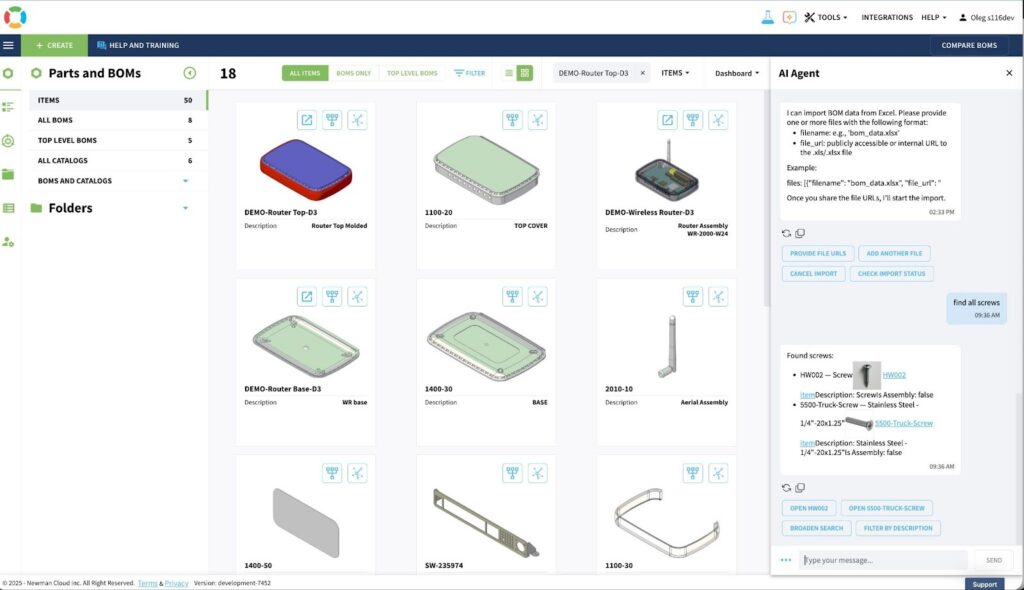
It also begins to unlock new scenarios: documenting a problem, comparing revisions visually, or adding a visual reference to an item or BOM. Images are becoming first-class citizens in the AI conversation, which brings the interaction closer to how engineers naturally communicate.
Working with Links and Navigating Information
We also improved how the AI handles references and navigation. Many workflows require jumping between a BOM and supporting information—item details, specifications, drawings, or documents. Now the AI can use links and help guide you as you move between different pieces of information.
This means you can stay in a single conversation and gradually explore a BOM, dig into specific items, and return to the main structure without losing your place. It feels more like an interactive session than a static chat.
From Conversations to Downloadable Outputs
Another important enhancement is the ability to produce actual files and reports through the chat. Instead of writing instructions or summaries only in text, the AI can now generate downloadable outputs. For example, after analyzing a BOM, the AI can prepare a quantity report, a summary document, or a short review file that you can download and share.
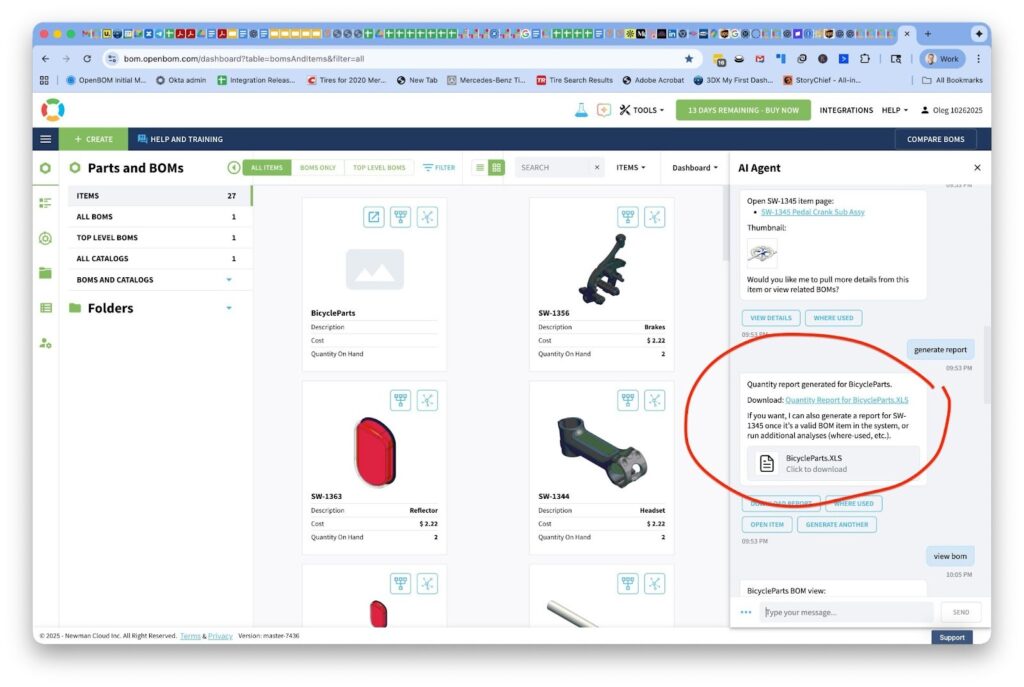
This makes the AI more practical as part of a team workflow. It supports not only the thinking process but also the creation of something tangible that can be used in meetings, reviews, or handoff discussions.
A More Fluid Collaboration Experience
To round out the release, we improved the overall experience of working with the AI:
- It is easier to clear the history and start a fresh conversation
- Attachments display more naturally
- Images and files appear inline in the chat
These small improvements matter because they remove friction and allow teams to use the AI more repeatedly and more collaboratively. The chat becomes more of a working space than a one-off tool.
Why This Update Matters
Each of these improvements moves us closer to an important goal: making AI not only a helpful assistant, but a useful collaborator throughout the product development and manufacturing process. The AI is becoming more capable, less transactional, and more aligned with real workflows. It helps you start work faster, stay organized, and reduce the number of manual steps required to get value from your data.
Engineers and operations teams already have enough tools and complexity in their daily work. The role of AI should be to simplify, guide, and remove barriers—not add more process.
This update brings the AI closer to being a teammate that stays with you through the task, not just someone who answers one question and leaves.
What’s Coming Next
Looking ahead, the next phase of the Private Beta will introduce capabilities that move AI beyond conversation and into more proactive assistance. The foundations are now in place for AI to begin acting—not just advising.
In the coming months, you will begin to see the early stages of an agentic model, where AI can help manage BOM workspaces, review data for quality, and assist with validation and readiness for release. We will also introduce the first multi-agent scenarios, where different AI “roles” support specific responsibilities such as design, procurement, or quality.
This is where the AI evolves from a support tool into a true co-worker.
Conclusion and Join the Journey
We are continuing to expand the AI Private Beta gradually, prioritizing companies with active product development, multi-level BOMs, and ongoing change and release processes. If this sounds like your environment and you would like to participate, we would be happy to hear from you.
If you are already part of the beta—thank you. Your feedback is shaping the next phase of OpenBOM AI. If you are following the journey from the outside, now is a great time to revisit the earlier posts, share your thoughts, and join the waitlist.
The future of engineering and manufacturing work is becoming more collaborative, more intelligent, and more connected—and we’re building it together.
REGISTER FOR FREE to check how OpenBOM can help you.
Best, Oleg
Join our newsletter to receive a weekly portion of news, articles, and tips about OpenBOM and our community.

